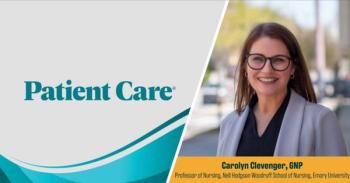
Safe Practice Guidelines for Oral Chemotherapy Found Gravely Lacking
BOSTON -- Few of the safeguards routinely used for infusion chemotherapy have been adopted for oral chemotherapy at major U.S. cancer centers, according to an analysis.
BOSTON, Jan.12 -- Few of the safeguards routinely used for infusion chemotherapy have been adopted for oral chemotherapy at major U.S. cancer centers, found a 2005 analysis
In a survey of pharmacy directors at 42 of the 54 National Cancer Institute comprehensive cancer centers, safety practices for prescribing, coordinating, monitoring, and educating patients about oral chemotherapy, were scattershot and left considerable room for improvement, according to an online report in the Jan. 13 issue of the BMJ.
Although some common malignancies can be treated with oral medications, offering patients newly found convenience compared with infusion therapy, 23 of the centers had no required elements for oral chemotherapy prescriptions, said Saul Weingart, M.D., Ph.D., of the Center for Patient Safety at the Dana-Farber Cancer Institute here, and colleagues.
Yet given the potential toxicities of oral therapy, the investigators said that the findings of this study emphasize the importance of forging a consensus on standardized safeguards and practice for prescribing and monitoring the use of these drugs.
Surprisingly, Dr. Weingart and his colleagues said, few of the safeguards in routine use for infusion chemotherapy have been adopted for oral chemotherapy. Only one in three organizations required a clinician to note the surface area or calculation of dose on the prescription for six commonly used oral drugs and only one in four required a patient's diagnosis or protocol.
Only about half the institutions coordinated oral with intravenous chemotherapy, and most centers provided little infrastructure to support adherence to treatment.
Dr. Weingart's team focused on six non-hormonal oral agents with a risk of serious toxicity. The drugs included Xeloda (capecitabine), Cytoxan (cyclophosphamide), Iressa (gefitinib), Gleevec (imatinib), oral Rheumatrex (oral methotrexate), and Temodar (temozolomide).
The findings were as follows:
- Clinicians at 29 centers used handwritten prescriptions. At two centers they used preprinted paper prescriptions, and at six they used electronic systems for most oral prescriptions.
- For six commonly used oral drugs, on average only 10 centers required a diagnosis on the prescription, 11 required the protocol number (when appropriate), four required the cycle number, nine required double checking by a second clinician, 14 required a calculation of body surface area, and 14 required calculation of dose per square meter of body surface area. However, over half (23) had no required element for oral chemotherapy prescriptions.
- Lack of standardization was also reflected in the use of informed consent. Only a third of centers asked patients to provide written informed consent when oral chemotherapy was given off-protocol.
- Respondents reported considerable variation in the methods used to coordinate oral and infusion chemotherapy among patients who received both treatments. Twenty-five centers coordinated care by maintaining a record of oral chemotherapy in the patient's medication profile. At 26 centers, a nurse or pharmacist reviewed oral chemotherapy during infusion treatment. Seven centers reported no formal coordination.
- Clinicians at most centers monitored patients' adherence to oral chemotherapy during office visits. Staff at 10 centers asked patients to bring in logbooks, and staffers at only nine regularly counted pills. Respondents from nine centers reported no formal process for monitoring adherence.
- Pharmacy services may be underused in the care of these patients. Although 33 centers offered patients a formal consultation with a pharmacist, respondents estimated that many (42%) patients declined a consultation.
Thirty-four centers had an on-site pharmacy for patients receiving oral chemotherapy who were not on research protocols. Respondents estimated, however, that 38% of eligible patients did not use this facility.
Failure to use an on-site pharmacy may be problematic, as respondents at 17 centers rated communication between community pharmacies and cancer centers as fair or poor.
At most centers physicians shared responsibility with other health professionals for educating patients about oral chemotherapy.
- Respondents at 25 (60%), 34 (81%), and 40 (95%) centers indicated that nurse practitioners, nurses, and pharmacists, respectively, were also responsible for educating patients about use and safety. Only a third of centers provided special training or certification for those who educate patients about these medications.
- Respondents at 10 centers reported that during 2004 and 2005, at least one serious adverse drug event related to oral chemotherapy had occurred in the previous year, and 13 centers reported a "serious near miss."
- Respondents at 36 centers indicated that clinicians in their organizations were concerned about the risks of oral chemotherapy.
On-site pharmacies and consultation with a pharmacist were widely available to patients, but both were underused.
Finally, the researchers reported that clinicians from various professions shared responsibility for educating patients about oral chemotherapy, but few centers provided clinicians with relevant formal training.
One in five organizations required a second clinician to double- check the prescription, and fewer than one in 10 required the clinician to record the treatment cycle.
Finally, half of the centers required no safeguards for prescription writing, the researchers said.
The study had several limitations, the investigators said. For example, the results may have overemphasized the perspective of pharmacy directors relative to other oncology clinicians. Similarly, respondents' evaluation of safety practices reflected their best- but potentially biased- judgments.
The oral agents considered here had significant toxicity risks, but the respondents may not have shared this definition. In addition, it may have been difficult for respondents to characterize medication practices in organization with practice patterns that varied across clinicians and treatment regimens.
In summary, the investigators wrote that despite clinicians' concern about oral chemotherapies, there is no apparent consensus among oncology professionals about safe practices for these drugs.
"Safeguards used for infusion chemotherapy cannot be abandoned for oral treatment. The oncology community must define safe medication practices appropriate for oral chemotherapy, develop practice guidelines, and accelerate their adoption," they concluded.
Newsletter
Enhance your clinical practice with the Patient Care newsletter, offering the latest evidence-based guidelines, diagnostic insights, and treatment strategies for primary care physicians.


















































































































































































































































































